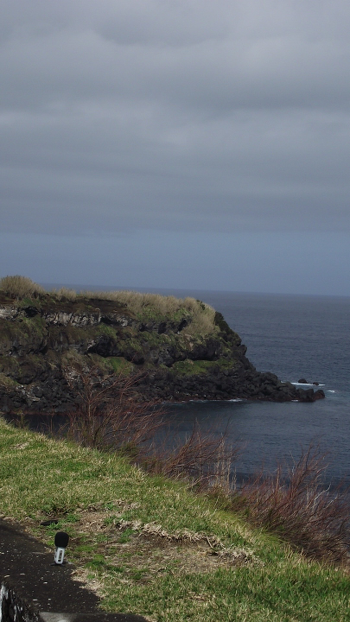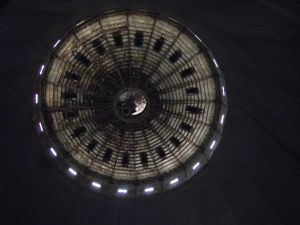25 years after the end of the Cold War, the political distance between Western Europe (e.g. Austria) and Eastern Europe (e.g. Romania) seems to be increasing again in many respects. But this distorts the fact that there is a lot of shared history, which already becomes evident when looking at the parallels between the cities of Vienna and Timisoara. For their piece “Utopia lives next door”, the authors move through both cities, inspired by the situationist concept of psychogeographical examination of urban environments by means of ‘dérive,’ the deliberately drifting walk through a city. The starting point of the excursions are the quarters Innere Stadt and Josefstadt – due to the shared history, both Vienna and Timisoara have districts with these names. From the field recordings thus collected, the authors compose the soundscape of a utopian city in which the difference between West and East has been erased. Woven into the composition are voice recordings from interviewees recalling instances of lived solidarity under difficult social and political circumstances in Vienna and Timisoara during different phases of the 20th century. Based on shared thematic motifs, the quotes are arranged into a quasi-dialogic relation to each other that offers a glimpse of the possibilities that were at hand, but were missed in the actual history of Austria and Romania. The speakers are Friederike Brenner (born in 1923 in Mödling near Vienna) and Johann Kassnel (born 1932 in Jahrmarkt near Timisoara).
2. Transatlantic Free Trade
by Gerald Fiebig

 PLAY
PLAY
3. Echoes of Industry
by Gerald Fiebig and Christian Z. Müller
Christian Z. Müller: saxophones, theremin
Gerald Fiebig: sampler, field recordings, processing
Composed and realised by Gerald Fiebig & Christian Z. Müller

 PLAY
PLAY
Due to its non-visual nature, its ‘disembodied voice,’ radio presents itself as the perfect ‘hauntological’ medium for representing the disappearance, the fading of once visible things into a state where they are half present, half remembered. Echoes of Industry undertakes to reflect, in an acoustic form, the social and architectural shifts that happen in European cities as certain industries are abandoned, their former sites becoming museums, venues for cultural events, or simply ruins, while industry itself becomes increasingly digital.
For this purpose, sounds of textile machines were recorded in a museum (http://www.timbayern.de/) representing the history of the once-vibrant textile industry in the German city of Augsburg. These sounds, with different machines layered over one another, make up the first part of the piece. For the second part of the piece, samples from these sounds were played back, in a duo improvisation with a saxophone, in an abandoned gas tank in the same city, making use of the immense echo delay created by this huge 84-metre high metal chamber (http://www.gaswerk-augsburg.de/gasbehaelter_augsburg.html) genutzt. Die Aufnahme im Gasometer fand im Herbst 2014 statt, als der Tank die Installation The Secret Hea. The recording session in the gas tank took place in the autumn of 2014 while the tank was home to the installation The Secret Heart by Jaume Plensa, containing a giant inflatable sculpture in the shape of a human heart. The hiss from the pumps that kept the sculpture in shape was filtered out from the recordings and then pitch-shifted so as to serve as a compositional element in its own right, alluding to the hiss of gas associated with the original use of the tank.
Gas tanks like this, often defunct, can be found in many European cities (Ostrava being an example in the Czech Republic), landmark monuments to an industrial technology on the brink of abandonment. The textile industry, however, is an industry that has almost completely vanished from Europe after it had shaped the face of many cities on the continent for well over a century. The industrialisation of textile manufacturing, starting from Manchester, served as a blueprint for the whole industrial revolution, and just like Augsburg was called the Bavarian Manchester, there was also a Saxonian Manchester (Chemnitz), a Polish Manchester (Łódź), and a Russian Manchester (Ivanovo).
In the third and last part of the piece, a different instrument takes over from the saxophone: the theremin. Designed from the start to be ‘disembodied,’ it is a perfect metaphor for the shift from analogue to digital forms of production, industrial or otherwise. To emphasise this shift, the theremin sounds are also given a treatment with echo effects, but digital ones: simulated spaces replace the built echo chamber of the gas tank, just as the ethereal theremin takes over from the very material saxophone.
Acoustic fragments of now antique textile machines played in an echo chamber that is now abandoned from its original use, in a limbo between ruin and a potential future use, are combined with sounds from the saxophone, an instrument whose invention and development historically parallels the industrialisation of Europe, and the theremin, that emblematic forerunner of digital sound technology. Echoes from the past meet acoustic foreshadowings of the future. While the source sounds were recorded in a clearly defined location, the piece is about a process that is not limited to the place of recording, but refers to a story that was played out all over Europe – another reason why radio seems the perfect ‘place’ to present this ‘dis-placed’ history.
Links:
First Broadcast 29. Mai 2015 - “Radioatelier” auf Radio Vltava (Tschechische Republik)

 PLAY
PLAY

